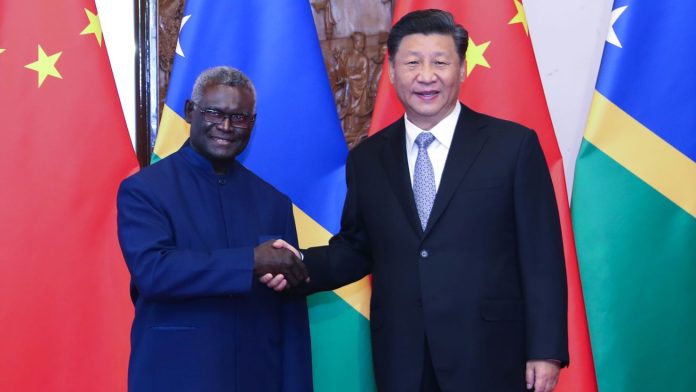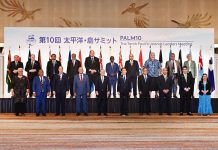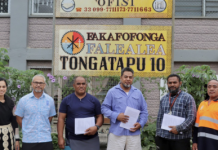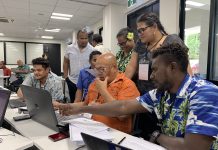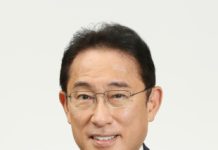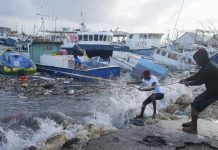By Terence Wood
Who will emerge as prime minister from Wednesday’s elections in Solomon Islands? The prime minister doesn’t shape policy in Solomons as much as some commentators suggest. Prime ministers there are largely prisoners of political economy. Still, as I wrote on 4 April, exactly who emerges on top after the election still has some importance. The prime minister will set the tone of relationships with China and Australia. Some would do a somewhat better task of governing the country than others too. And the incumbent, Manasseh Sogavare, has a popularity problem in poorer parts of Honiara. His selection as prime minister in 2019 triggered riots.
In a second post, I tried gazing into a very murky crystal ball and said that, of the contenders vying to be prime minister this election, the odds were slightly in Sogavare’s favour. He has the most incumbent members of parliament (MPs) in his party going into the election, and in the last two elections around 75 percent of incumbents were re-elected. There might be defections, but the odds are that, if they’re re-elected, a good number of those incumbents will stay in Sogavare’s camp. This would afford him an advantage as contenders’ jostle for the leadership after the election. A lot could still go wrong, but he’d have a head start.
Of course, this all assumes that most of the sitting MPs in Sogavare’s Ownership, Unity and Responsibility (OUR) Party will be re-elected. But will they?
If the last two elections, in which incumbents have been re-elected at very high rates, are anything to go by, the answer would seem to be “probably”.
But there is one reason to believe that this election will be tougher. Why? The answer is to do with the relationship between candidate numbers and re-election rates, which was first observed by political scientist David Hegarty in Papua New Guinea in the 1980s. “Hegarty’s Law” (my name for it, not his), states that the more candidates there are in an electorate, the less likely the incumbent is to win. A related way of thinking about this is that, for any given electorate, if candidate numbers increase from the previous election, the odds the incumbent will be re-elected fall.
Broadly this has held true for Solomons. The relationship is too weak to allow confident predictions for specific electorates. However, overall, changes in candidate numbers within electorates are associated with trends in re-election rates.
The chart below shows how many individual electorates have seen candidate numbers rise, stay the same, or fall compared to the previous election. It shows patterns for four years. The first is 2010, an election where 56 percent of sitting MPs won their seats back, which is very close to the historical average. The second and third come from the last two elections, where re-election rates rocketed up. All three charts fit nicely with Hegarty’s Law. The fourth chart is from this election. It looks a lot more like 2010 than 2014 or 2019. In other words, there are quite good reasons for thinking that MP re-election rates will be a lot lower in this election than in the last two.
Even so, a 55 percent re-election rate means still means incumbents are more likely to be elected than lose, which would still suggest Sogavare would emerge after ballots were counted as the man with the most MPs in his party.
There’s more to the story though. The chart below compares, for the upcoming elections, changes in candidate numbers between electorates where the incumbent is from the OUR party and where they are not.
Candidate numbers have risen first and foremost in electorates where the sitting MP is from Sogavare’s OUR party.
This doesn’t mean the OUR party is headed for an electoral wipeout. It will still bring a significant number of MPs into post-election negotiations. But perhaps not as many. Perhaps not enough to give Sogavare a major advantage as the turbulent process of trying to select a prime minister begins.
Or perhaps it means nothing. Hegarty’s Law isn’t an iron law. It failed to predict the rapid rise in re-election rates in PNG in 2022. And there’s many things that may undermine it in the Solomons in this election: maybe last-minute cash injections from external actors, or perhaps attempts to re-enter the political fray by former prime minister, master political maneuverer, and very wealthy business man, Gordon Darcy Lilo.
I’m not going to make any confident predictions: if anything, my crystal ball is more murky than it was last week. If nothing else though, the trend in candidate numbers in 2024, and the apparent disproportionate effect on OUR party incumbents, is intriguing.
Terence Wood is a Fellow at the Development Policy Centre. His research focuses on political governance in Western Melanesia, and Australian and New Zealand aid.






